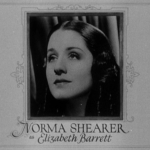 |
 |
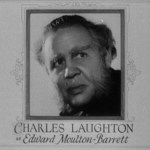 |
| Elizabeth Barrett Norma Shearer |
Robert Browning Fredric March |
Edward Moulton-Barrett Charles Laughton |
| Released by MGM | Directed By Sidney Franklin |
||
Proof That It’s Pre-Code-ish
- Aspects of the incestuous feelings Edward Barrett felt towards his daughter Elizabeth are present, though diminished from what was portrayed in the original stage play. However, Charles Laughton is famous for saying about playing Edward, “They can’t censor the gleam in my eye.”
- Fredric March’s wardrobe is… well, see the end of the Trivia section to get an eyeful.
The Barretts of Wimpole Street: Fatherly Love
“Love casts out fear.”
By late 1934, sin and scandal were out, and lush costume dramas were in. Following the critical and box office success of Best Picture nominees Little Women (1933) and Smilin’ Through (1932), Hollywood suddenly found a way for chaste plays to pay. It’s no surprise that Irving Thalberg, Norma Shearer’s husband and one of the production heads at MGM at this time, was insistent to put his wife in these type of pictures. Besides the guaranteed box office for putting one of the biggest stars of the screen in films that seemed to beckon to the future of motion pictures, Thalberg was also obsessed with turning his wife into a ‘legitimate’ actress as a great deal of snobbery still abounded at the time.
Shearer, who had pushed for more adventurous roles at the early part of the decade, was worn down by her husband’s insistence and the acclaim she received. For a woman who could portray carnal, unspoken desire so well, Shearer was a 1930s woman in a marriage with a great man, but a 1930s man all the same. Although she was reluctant to take the part, its unsurprising that she turns in a great performance in The Barretts of Wimpole Street. It, too, is about chaffing against the wishes of someone you love and finally having to find peace with it.
Elizabeth Barrett (Norma Shearer) is an invalid, stuck on the same couch for the past six years and barely interested in rolling out of the room, let alone back outside. Her large family– two sisters, six brothers– all dote on her, but there’s an ugly center to household, and that’s their father, Edward (Charles Laughton). Manipulative, domineering, and utterly ruthless, Edward’s forbid his children from marrying or even carrying on affairs, seeing their affection for others as betrayals of their love for him.
Elizabeth’s flirtatious letters with fellow poet Robert Browning (Fredric March) come to fruition suddenly one winter day when he shows up on the doorstep. Their relationship blossoms, as Browning is both passionate and self depreciating (“When that passage was written, only God and Robert Browning understood it. Now, only God understands it!”). Elizabeth becomes trapped between her fondness for the delightful Browning and the wrathful, lustful jealousy of her father.
Because, yes, incest and desire permeates Laughton’s performance. The most telling (and amusing) moment of the story comes when Elizabeth’s flighty cousin, Bella, comes and showers Edward with affection. She offers a kiss and he takes her up on it, only to immediate jump out of his chair afterward to prevent her from noticing his very sudden arousal.
It adds a rather nasty layer to the story, something desperately needed since the romance itself is surprisingly free of complications or drama. The movie’s best scene comes early on when Robert and Elizabeth meet for the first time. Browning is so enthused with their meeting, he just races around the room, explaining that everything was just as he’d pictured it. March is unbridled energy and enthusiasm here, and, while Shearer is confined to a sofa for the entire encounter, she manages to match his enthusiasm with shy reserve and vigor. The capstone to the scene, of Elizabeth summoning the strength to get to the window (with the help of a few carefully place chairs) is perfectly evocative of a sudden, immutable romance.
I’ve read a lot of other writers discuss Laughton’s ‘presence’, but what really impressed me was how his character’s dialogue is so brilliantly laced with self importance and hurtful remarks. He often puts himself and God together as equals in his phrasings, and at one point lays a guilt trip on Elizabeth for wanting to recuperate in Italy because he’ll be lonely without her, knowing full well and good that this could likely mean her death. He also knows just when and how to undermine her self confidence, setting out to ruin any happiness that she may seek or discover outside of him.
The film’s climax almost allows you, for a brief second, to peak beneath Edward’s cruelty, to empathize with what he’s lost and his complete inability to love things for what they are. And then, beautifully, the film reverses that at its last moment, again revealing how much petty cruelty is twisted up within him.
The movie has a happy ending, a kiss and an escape. For being relatively long for a 30s film at 100 minutes, it’s still quick paced and smart, static most of the time but director Sidney Franklin knows how to aim for the gut when he needs to.
A few words on Norma Shearer, since is more or less the last movie of hers I will be covering for this site. You can read more about her life at my Norma Shearer page, as well as find links to all of other films of hers I’ve covered on this blog.
It’s difficult to overstate the importance of Norma Shearer as an actress and a feminist in the cinema of the early 1930s. Betrayed by an industry that would soon make a sharp pull toward the right, it’s apparent that the trends of the films of the early 30s were largely following Shearer’s lead in tackling complicated and controversial subjects with style and verve. While it took her time to adjust to sound films– her role in The Divorcee is sometimes lambasted, even if it was a revelation compared to a vast majority of other 1930s transitions– her career flourished because Shearer wanted it to.
I think to modern audiences, it’s the sophistication that Shearer projects that holds the most cache. Her two most often discussed films, The Divorcee and A Free Soul, both show her at her sensual best in simply stunning outfits. Other films tried to mimic this, like Strangers May Kiss and Riptide to a lesser effect, mostly because it was hard for studio scribes to fashion their biggest draw into someone both daring yet palatable to a deeply conservative and wounded country.
There are miscalculations on her part, and I understand where the Shearer haters come from sometimes. Well, rarely. But she does sometimes over gesticulate. Sometimes you can see that cast in her eye. Sometimes you can sense the panic in her when she’s stuck with a bad director, too.
But those are simply too rare for me to care much about. The scenes of Shearer where everything snaps into play– that crack in her voice as she tells her cheating husband that she’s balanced their books in The Divorcee, her physicality in the brawl at the end of Private Lives, her seducing Gable in A Free Soul, her losing her cool after years of fear and neglect in Strange Interlude, basically all of Let Us Be Gay— that’s what stays with me.
Stars are icons because they are fashionable and beautiful, and because they have a personalities. Ones so strong and vivacious that every movie they make becomes about a facet of them, hence the fascination they hold. Shearer was at an intersection of history and made the most of it before being forced onto the path of submissive duty. Her life may not have been an easy one, but when Shearer clicks, it’s not just great acting, it’s great being. There’s something so wondrously alive in that. I have not, and probably will not, ever be able to resist it.
Gallery
Hover over for controls.
Trivia & Links
- Released in September 1934, so not technically a pre-Code film, though it is on the list.
- Remade in 1957 with Jennifer Jones in the Norma Shearer part. Notably, it was made by the same director (Sidney Franklin) and is a shot-for-shot remake, with the major difference being (besides the cast) that it’s in color and Cinemascope.
- Noted journalism mogul William Randolph Hearst demanded MGM cast his mistress, Marion Davis, as Elizabeth Barrett. When he did not get his way (and thank God for that), he ended her contract with MGM and moved Davies to Warner Brothers. As a result, no Hearst newspaper reviewed the film, and were, in fact, forbidden to mention Norma Shearer’s name for several years thereafter.
- The best researched and most passionate review I found comes from Cinema OCD, who admits that they spent two weeks post-viewing researching the film and the lives of Barrett and Browning. Here she tries to dissect the film’s extreme popularity in 1934:
Escapism alone can not explain the popularity of the play and film. The play focuses instead on the father’s opposition to marriage, implying rather strongly that he was a rapist, molester and that incestuous feelings were behind his strange and vehement opposition to his daughters marrying. In real life Edward Mouton Barrett was opposed to all of his 12 children marrying and disinherited the boys and girls who disobeyed him. In some of Elizabeth’s letters there are hints of physical abuse, but no explicit examples are ever named. The application of modern psychology to Mr. Barrett’s strange attitudes (Elizabeth describes them as “eccentricity and something more”) was probably appealing to 1930s audiences as well as the lurid subject matter. Most appealing of all, was probably the theme of breaking away from one’s extended family and focusing on creating a new, separate “nuclear” family. Demographically many Americans were in this boat. The Depression caused many families to stay together perhaps longer than the young people could wish as marriages were happening later, etc. My own grandparents were forced to move back in with my great-grand parents, with not always harmonious results.
- FilmFanatic.Org rates this as a must see and has some interesting notes on the acting in the film:
Despite being just a few years older than Shearer in real life, Laughton convincingly plays her emotionally incestuous father — a man determined to keep his beloved daughter permanently by his side, and deny her any chance at romantic happiness; however, Laughton is so naturally adept at playing a creepy baddy that one can’t help wishing for an even more nuanced interpretation on his part. Meanwhile, March is suitably bold (if undistinguished) as Browning; he apparently regretted not doing even more with this role.
- True Classics likes the movie, and talks about how the movie glossed over what may have been other reasons for the central reasons for the romance:
The Barretts of Wimpole Street is another in a long line of Hollywood biopics that plays loosely with historical fact–though, to be honest, the fault for that lies more with the Rudolf Besier play on which the film is based. Although through my education in literary studies I have read a great deal of both poets, I had never previously heard of any incestual motive on the part of Elizabeth’s father. From most accounts, Mr. Barrett disapproved of Robert Browning on the grounds that he believed him to be a fortune hunter. To the practical skeptic, this seems likely, as the Barrett family had great wealth. Elizabeth was 38 years old and had been considered to be an invalid for a number of years before meeting Robert, who proclaimed his love for her in one of his first letters to her, prior to meeting her. There have been many theories for the motives behind Mr. Barrett forbidding any of his children to marry; however, if the allegations provided in this film are indeed true, we will likely never know for certain.
- A nice still of Maureen O’Sullivan at Doctor Macro, as well as a nice big version of the film’s poster.
- TCMDB has a lot of good info, too, but its best chunk is on the haughty Charles Laughton:
Charles Laughton, fresh from his Oscar-winning performance in The Private Life of Henry VIII (1933), was Thalberg’s personal choice to play Barrett’s overbearing father. Although Laughton was only three years older than Shearer, he was willing to age himself with white muttonchop whiskers. Those whiskers were a source of great merriment one day for Shearer and co-star Maureen O’Sullivan who couldn’t stop laughing about them. Shooting was cancelled for the day, when Laughton stomped off the set in disgust. Laughton also agreed to lose 50 pounds, and during filming he got vicarious pleasure out of watching Shearer devour huge meals. He was less happy about toning down the hints of incest in the play as a concession to the censors. “But they can’t censor the gleam in my eye,” Laughton told Thalberg. A tormented and insecure man, Laughton could be extremely difficult to work with, but he and Shearer got along well and became good friends.
- William K. Everson’s film notes (at the bottom half of this page) from 1969 are chock full of great observations on the film’s structure and pacing. To wit:
The atmosphere is very much that of the stage rather than the screen, even to the use of a very sparse musical score, limited mainly to punctuation of locale and time transitions. The choice is obviously deliberate, since when Franklin does, on rare occasions, decide to use the language of film– a mobile camera concentrated on Laughton, the cutting and subjective shots in the sequence of Elizabeth Barrett’s attempt to walk upstairs– he uses them well. For the rest, it is a picture of taste, pictorial elegance and literate dialogue beautifully spoken. Although individual scenes seem slowly paced, it is no[t] a slow film, and its eleven reels are gone much faster than, for example, many zippier “mod” films like Modesty Blaise.
- Lastly, when I was at the Turner Classic Movies Film Festival a few weeks ago, I ran into Jill Blake of The Black Maria who I’ve known online for a while. Conversation turned to me writing about Norma Shearer films and Jill began to look super excited, jumping in with, “Oh my god, did you see Fredric March’s penis in The Barretts of Wimpole Street?” I, dear readers, had to admit, no, no I did not. Luckily Jill had a number of pictures on her phone of how Fredric March eschewed undergarments for a number of his scenes in this movie. With her permission, here is the proof:
(Click to make them big. And I do mean big.)
Awards, Accolades & Availability
- This film is available on Amazon and Warner Archive.
Comment below or join our email subscription list on the sidebar! |
||
 |
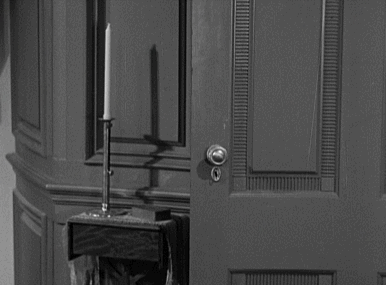 |
 |
 |
 |
|

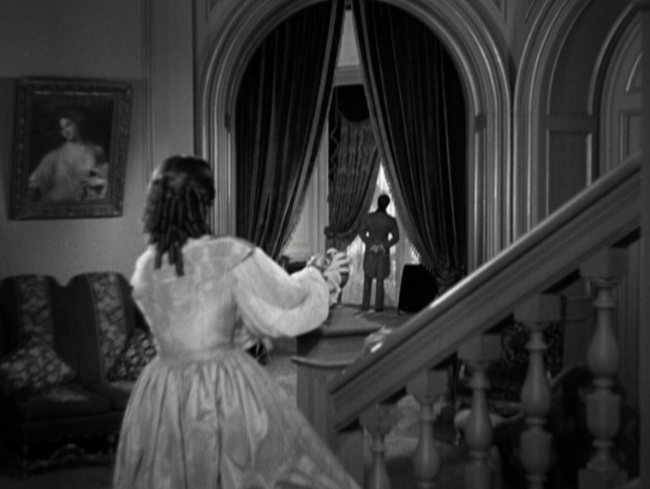
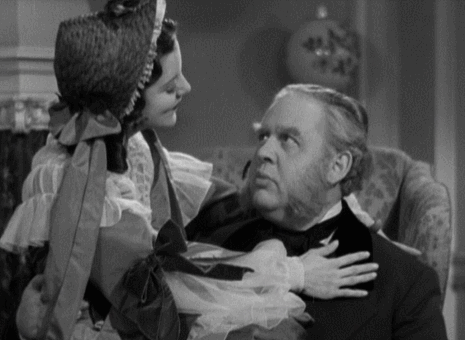

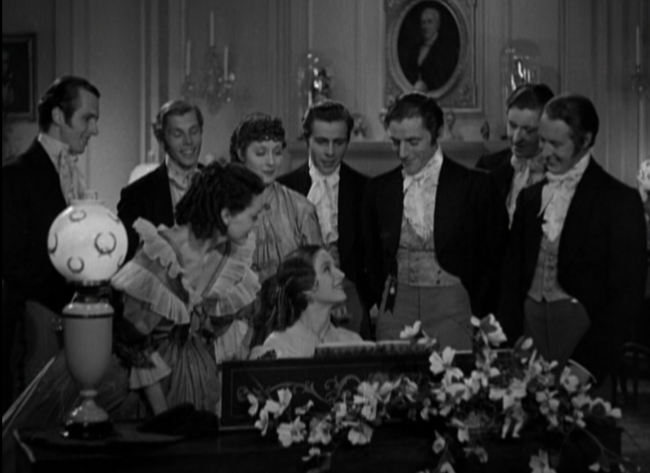
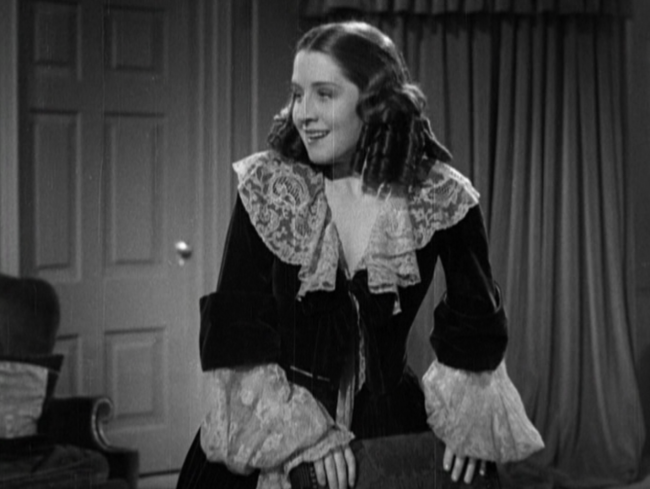
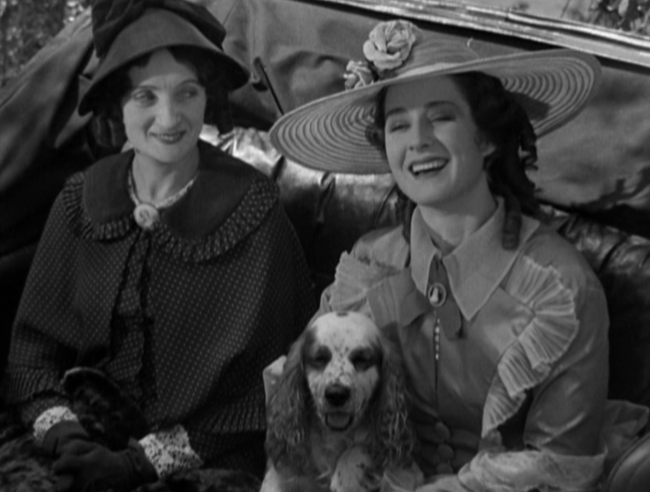

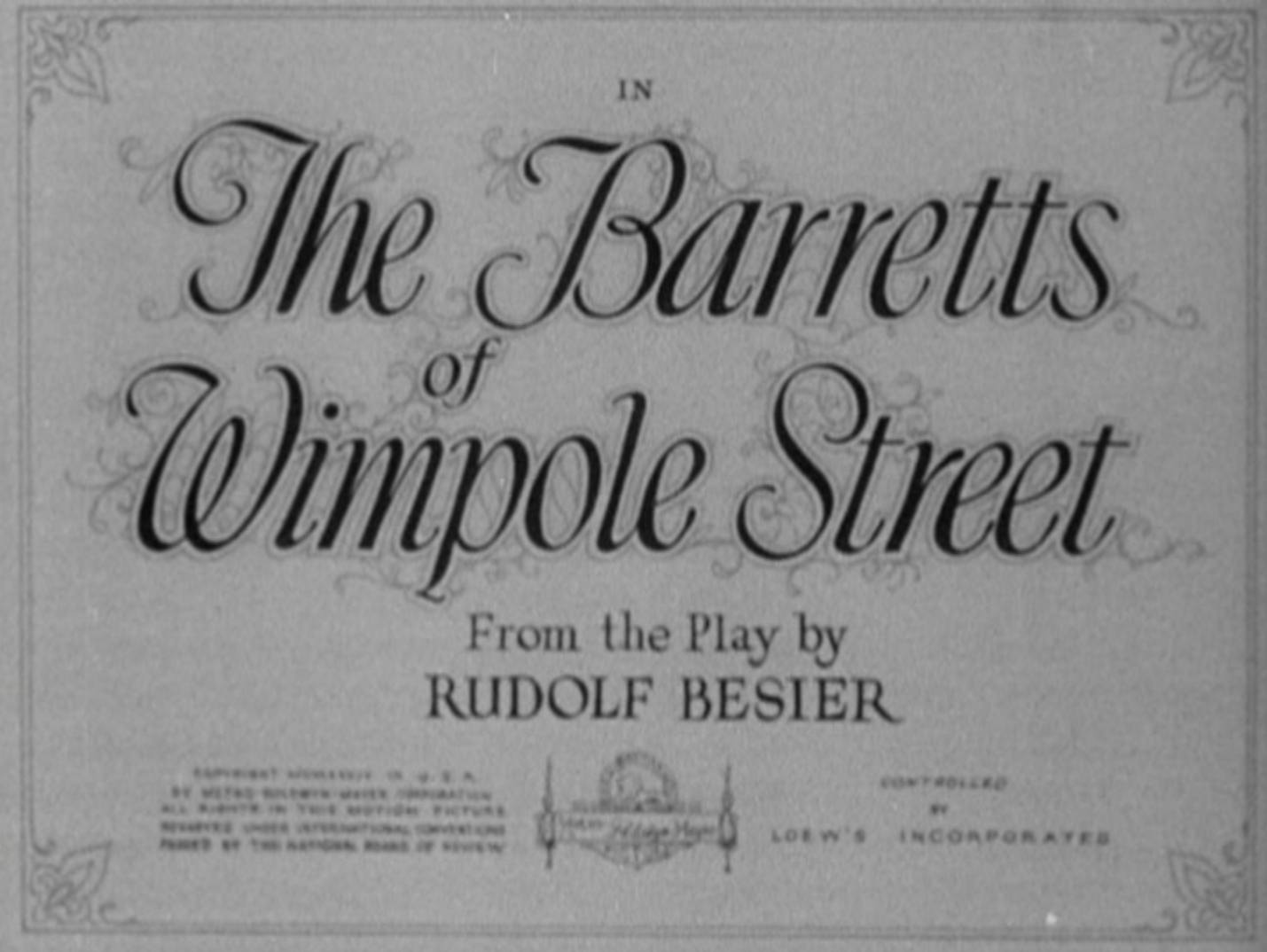
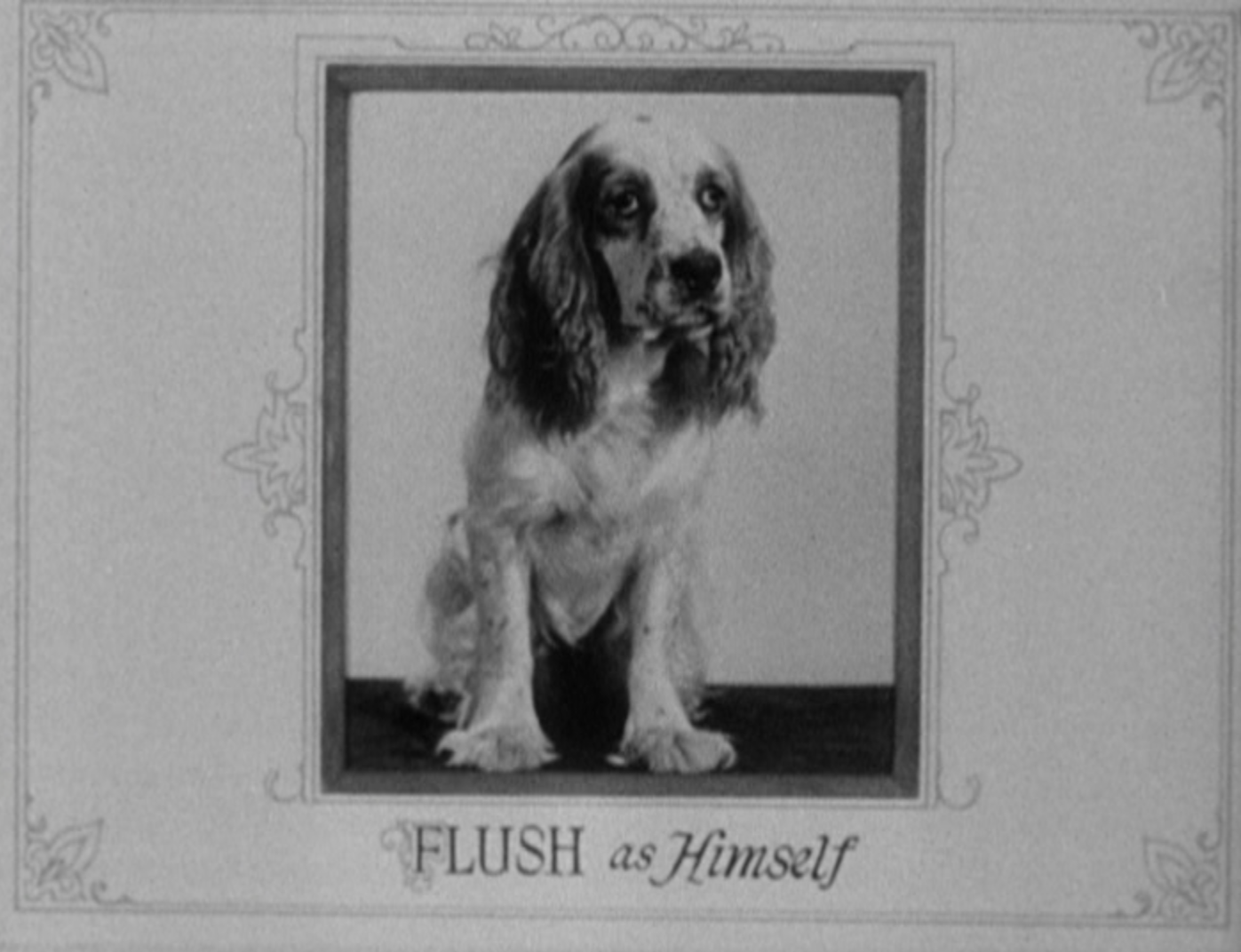
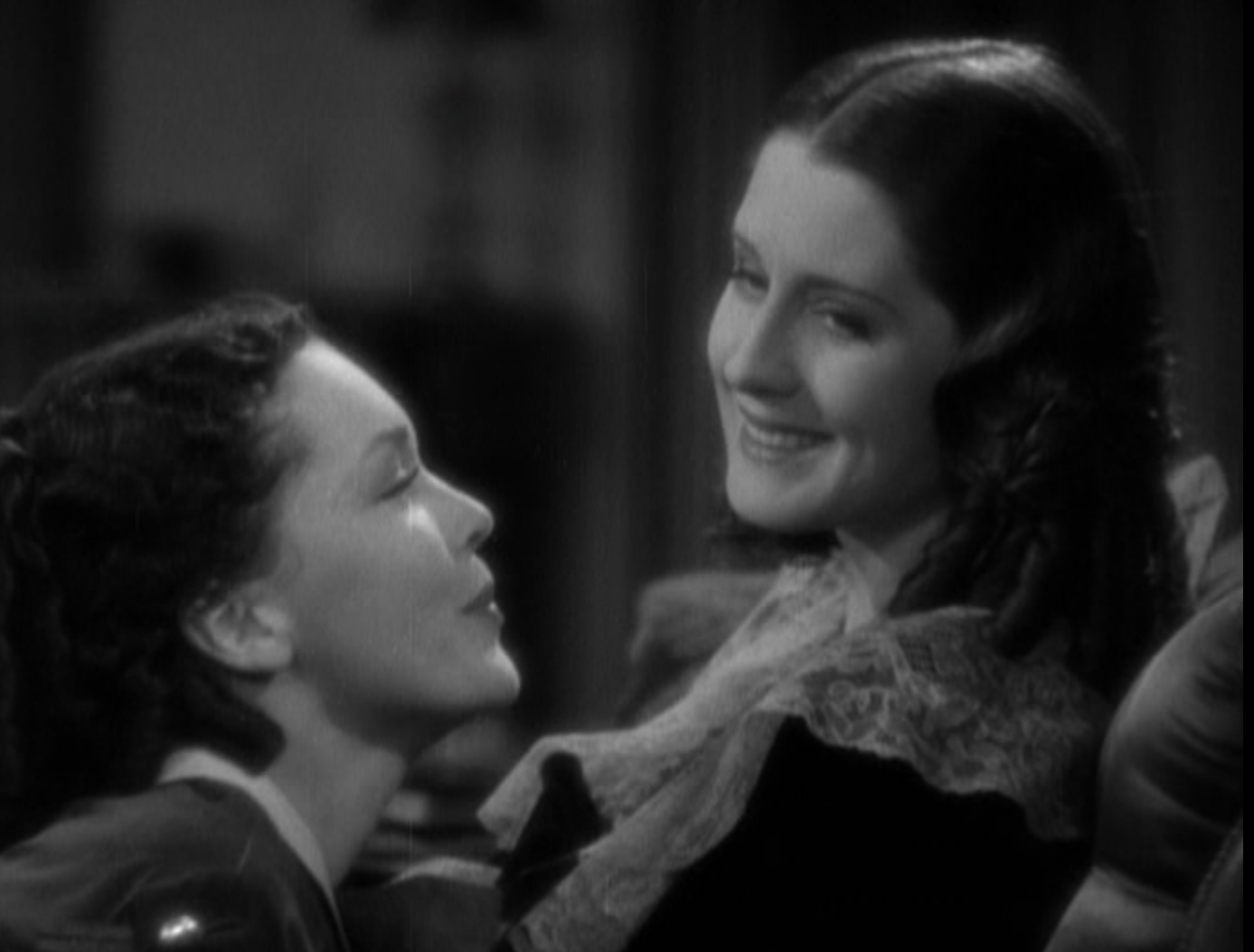
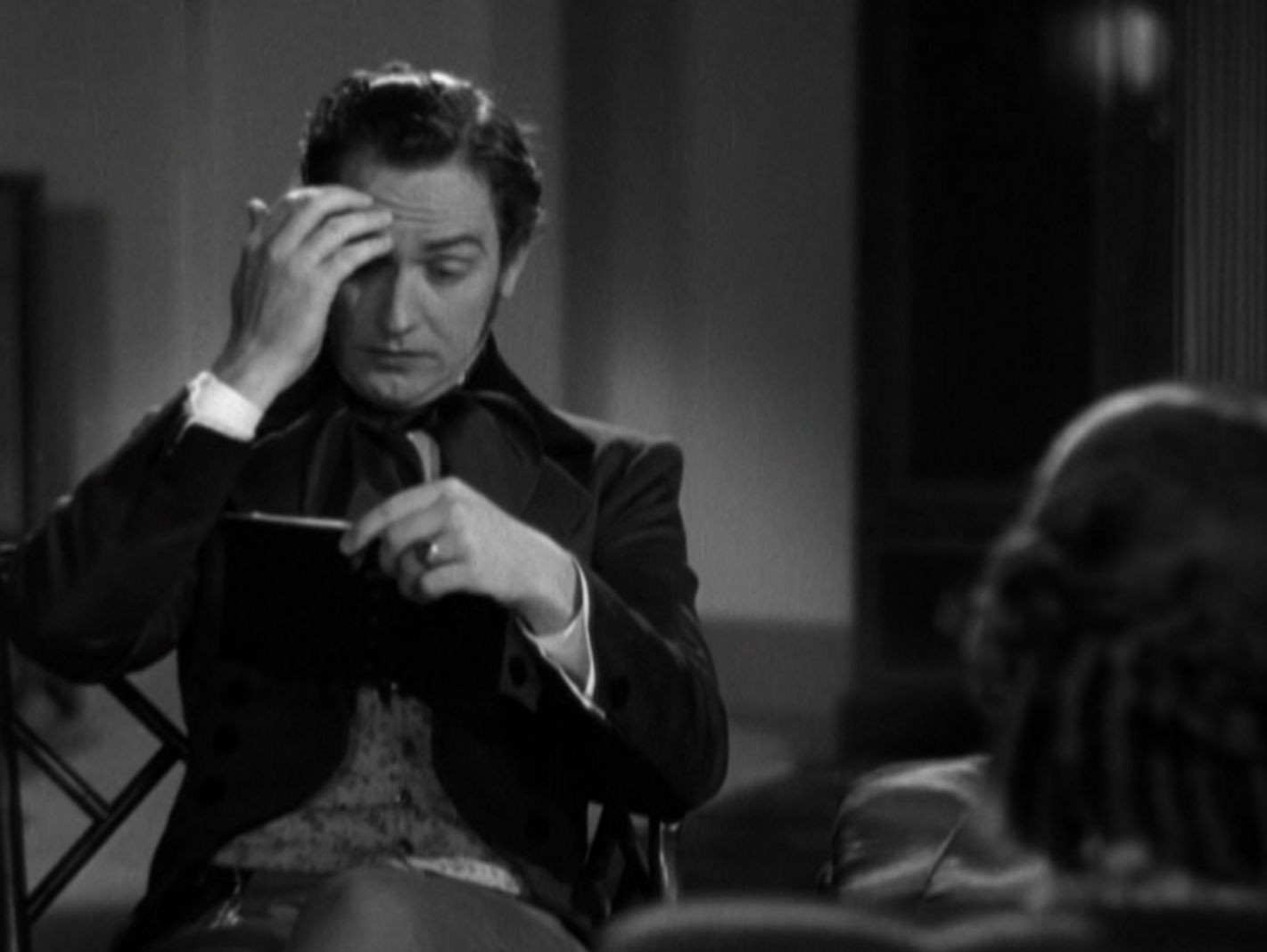
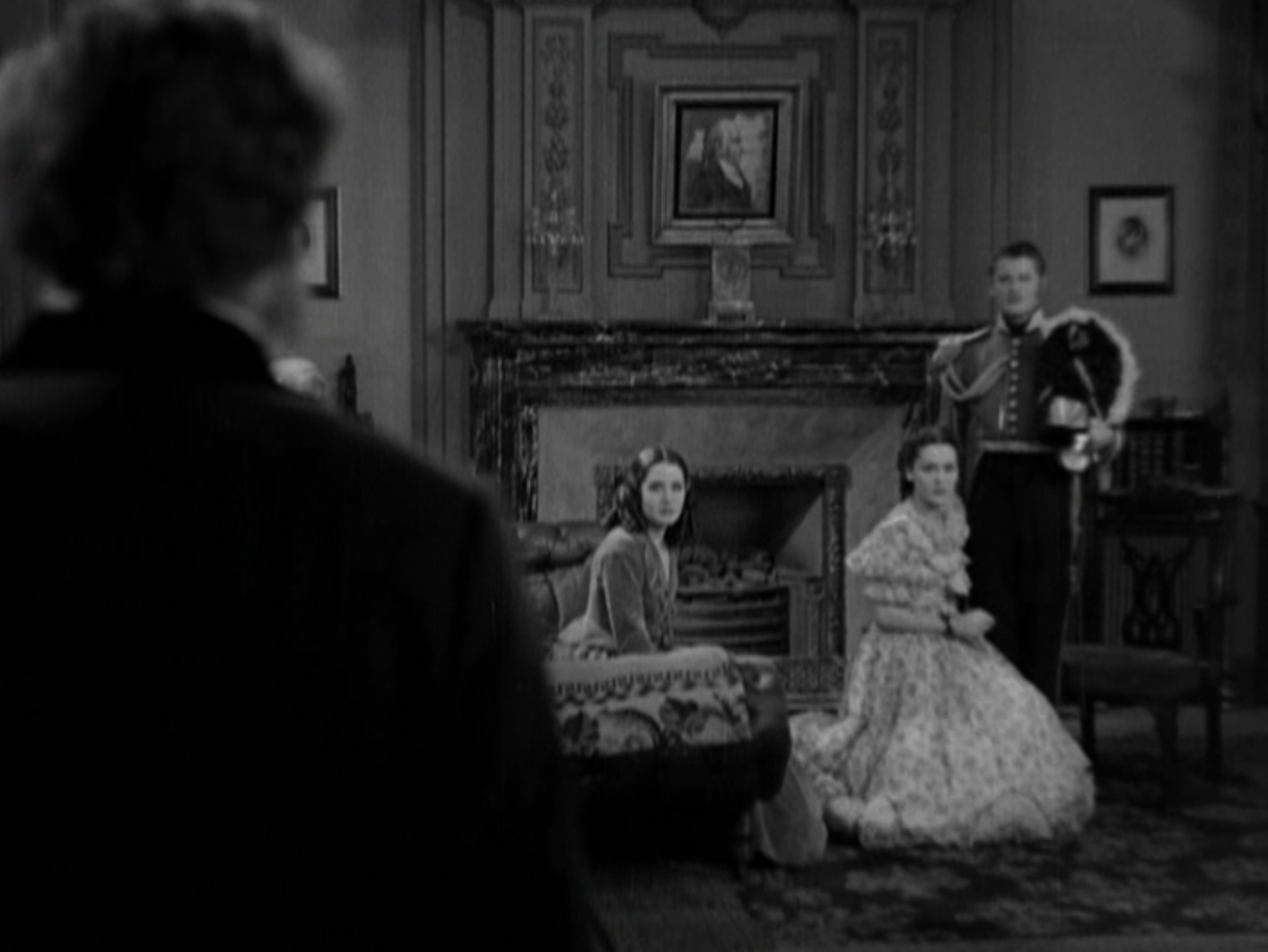
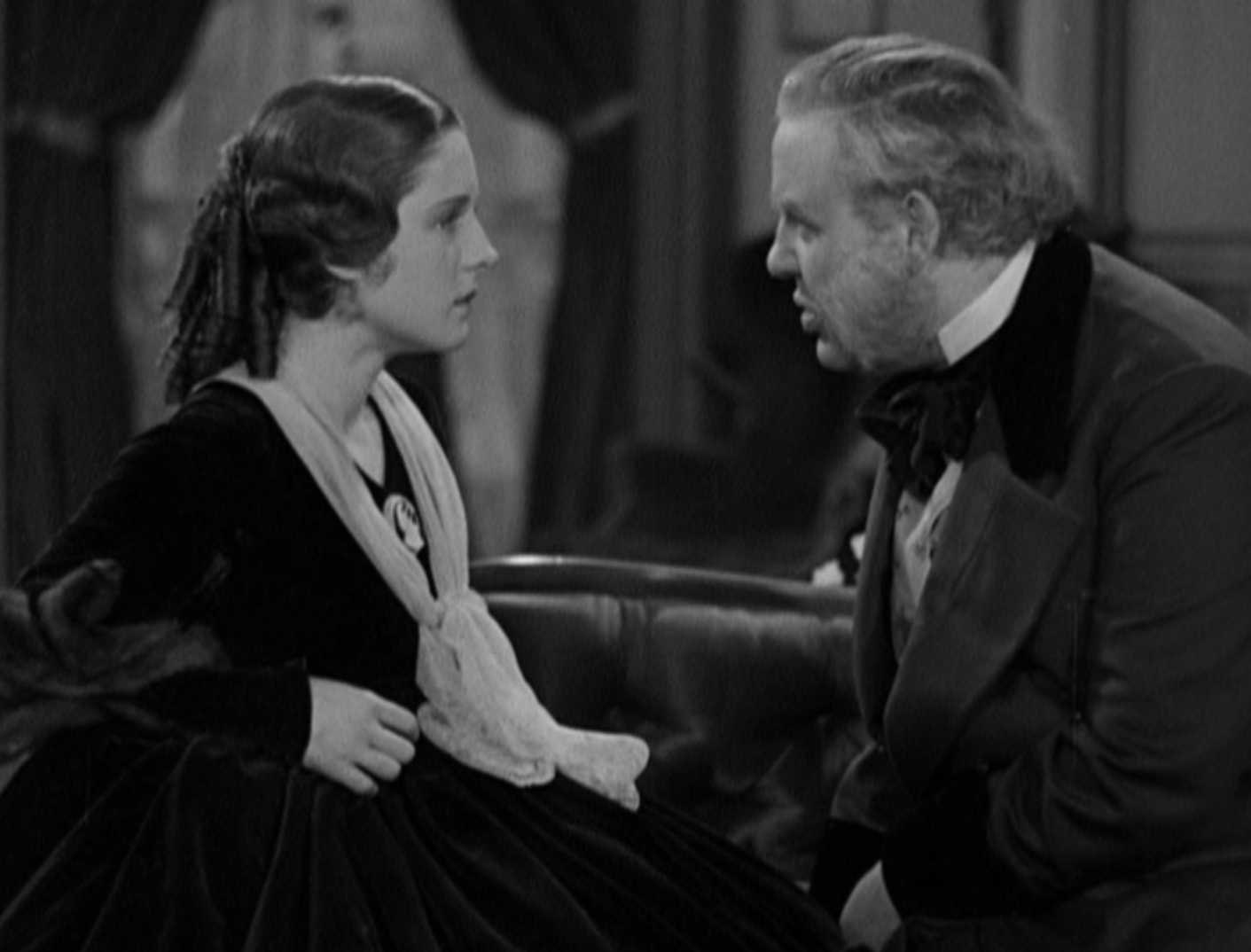
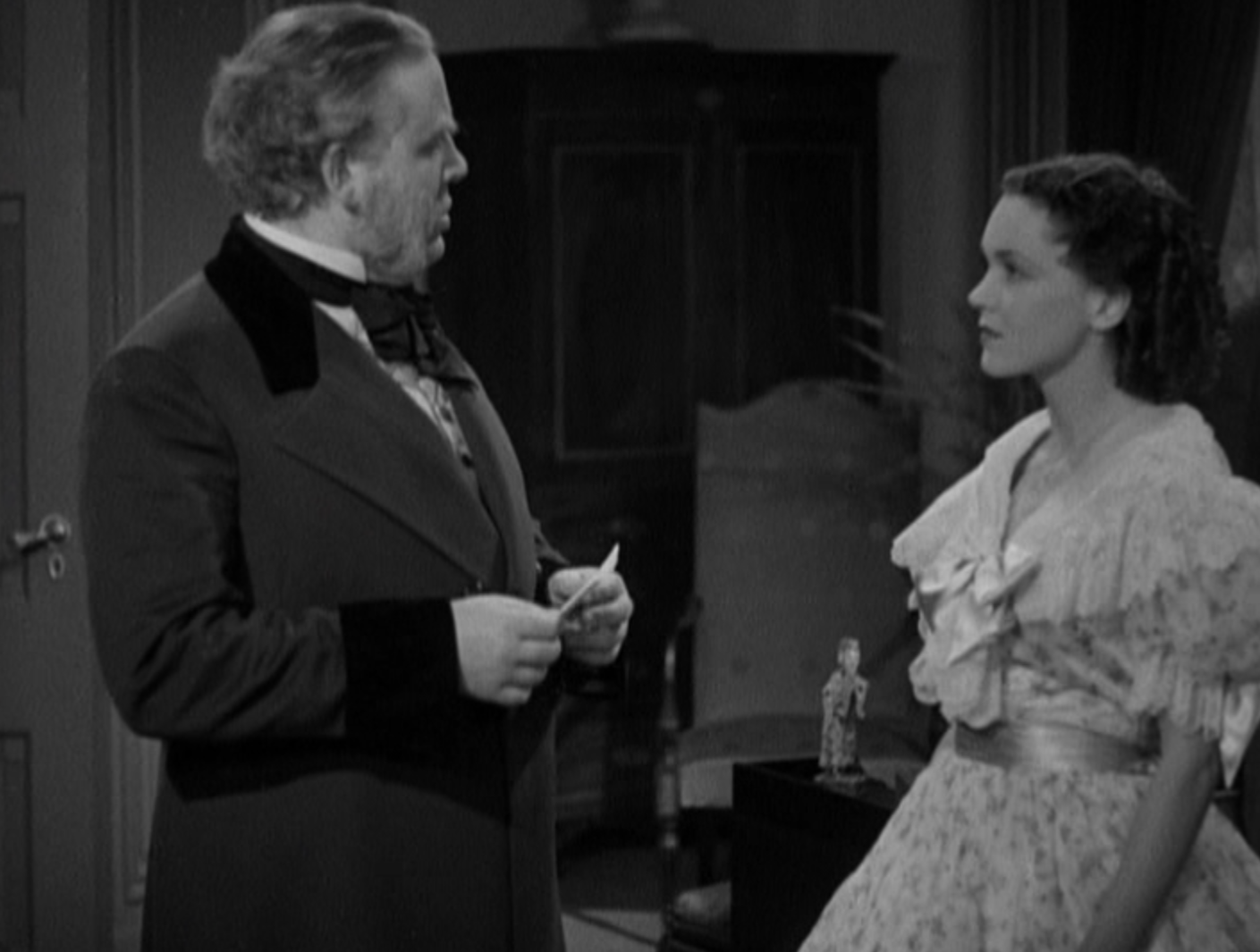

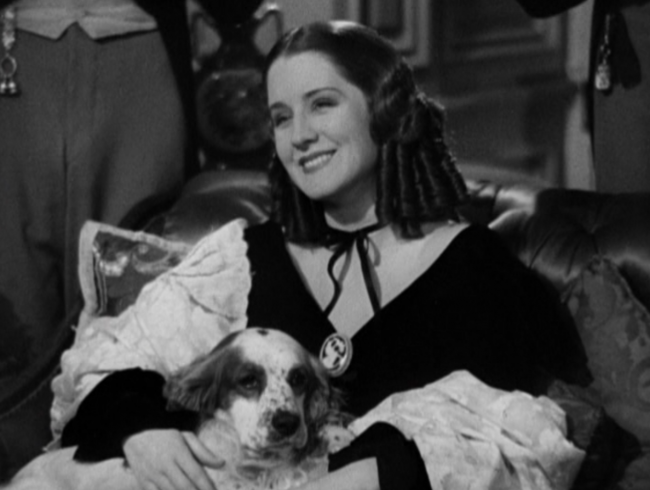
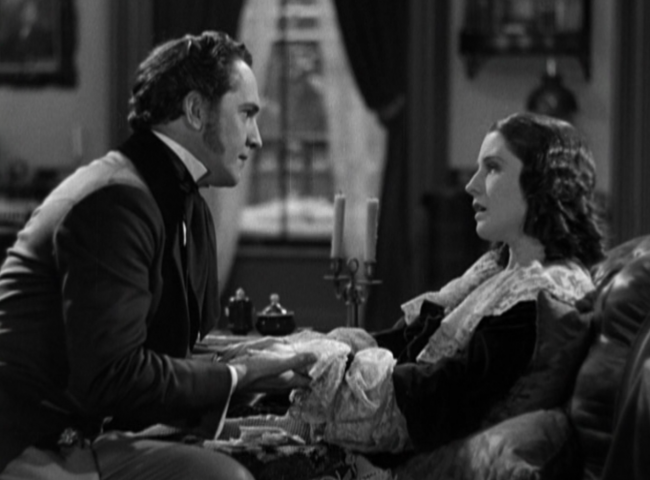
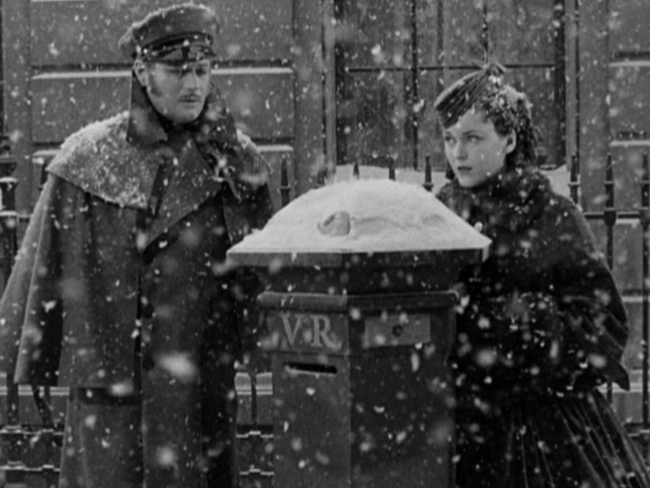
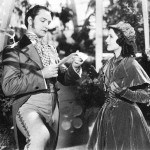

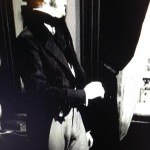
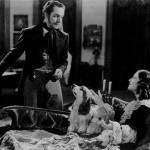


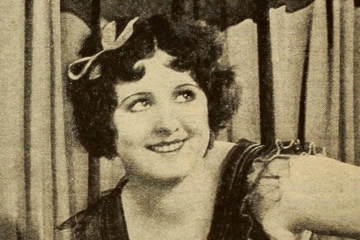
5 Comments
Brittaney · April 20, 2015 at 11:57 pm
I agree completely with your assessment of Norma Shearer. It’s nice to have my feelings about her put into words. There’s just something about her.
Dave L · April 21, 2015 at 9:57 pm
The story I’ve read, is that when they were making Strange Interlude, Norma, in an atypical example of star imperiousness, took a disliking to the attention Clark Gable was showing toward Maureen O’Sullivan, who had a little time at the end of the film as the aged Norma’s daughter-in-law.
Norma had her maid hand deliver a note to Gable asking him not to chat up Miss O’Sullivan so much. Nobody left alive knows the exact wording, but Gable replied in kind, essentially telling his co-star where she could head in. Less than two full years into his own movie stardom, Gable took shit from no leading lady, the boss’s wife no exception.
However Norma, who tended to live her parts while playing them, would meet O’Sullivan again in Barretts, here playing a very protective older sister, and according to O’Sullivan’s memory as told to David Letterman as late as the 1980s, their relationship warmed greatly off screen as well.
Dave L · April 22, 2015 at 12:07 am
Marion Davies and Norma stayed friends always despite the jockeying over their heads on corporate levels, especially by W.R. Hearst, to position them as rivals.
Marion was wonderfully gifted at comedy, and while she certainly enjoyed her own stardom, she was never made of the all-consuming ambition of Shearer or Joan Crawford. Disappointed at the respective times of losing Elizabeth Barrett and Marie Antoinette, Marion was nevertheless incapable of holding a grudge. In turn, the continued friendship between she and Norma went some way to mending any dented fences between Hearst and Thalberg.
Judy · May 9, 2015 at 9:31 pm
I saw this many, many years ago on TV and have always remembered Laughton’s performance – as a big fan of both Brownings’ poetry, I can’t believe I’ve never revisited it! Must do so. It would also be interesting to see the remake with another great actor as Edward, John Gielgud – scene for scene or not, I’ll bet he manages to give a different take on the role. Enjoyed your review and your wonderful description of Norma Shearer’s quality as an actress.
Danny · May 25, 2015 at 2:41 pm
Thanks. Maybe I’ll have to check out the remake too one of these days.
Comments are closed.